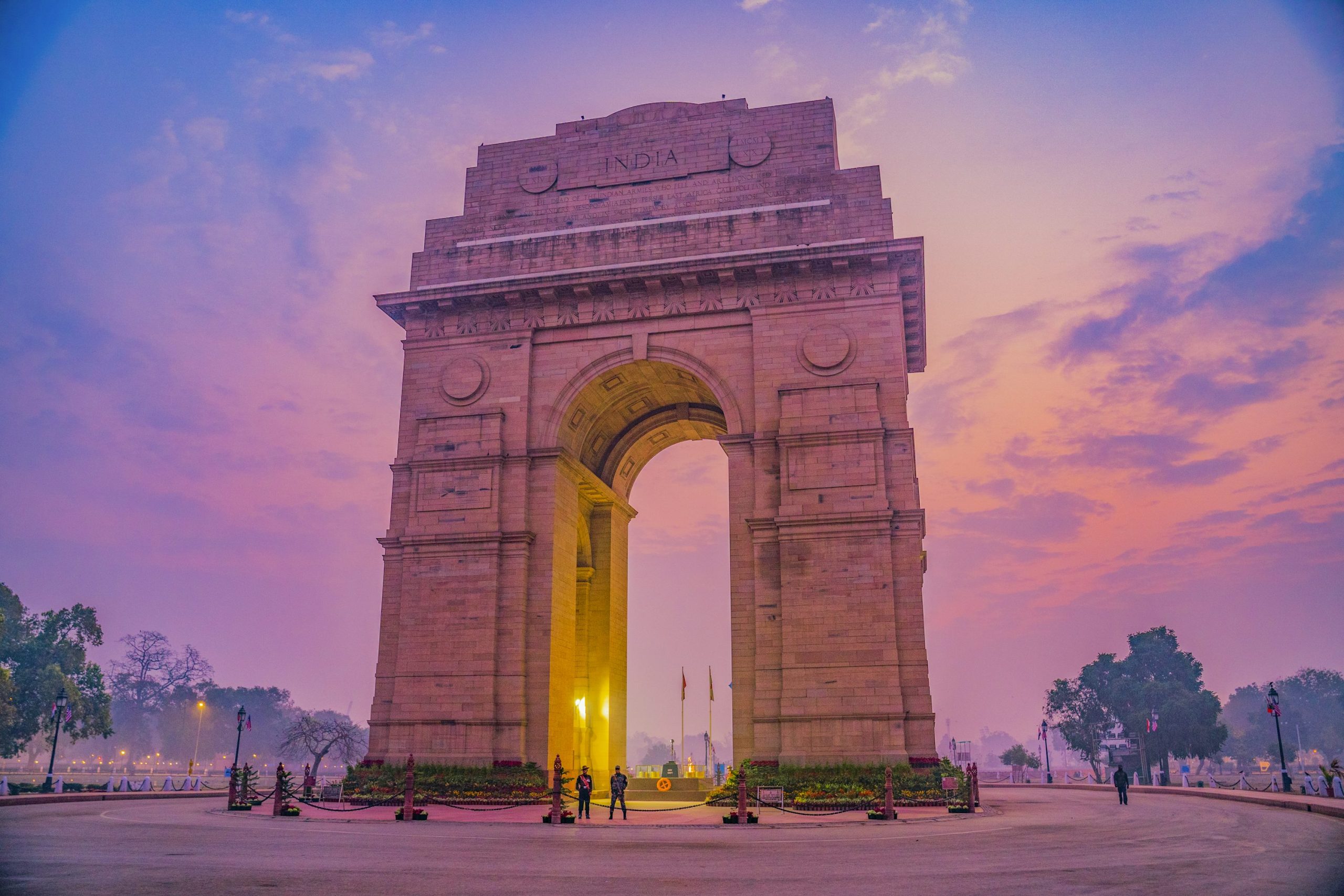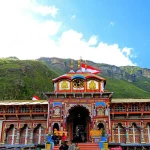Learn how to plan Char Dham Yatra from Delhi with expert tips on routes, travel modes, accommodations, and the best time to start your spiritual journey.
The Char Dham Yatra, one of the holiest pilgrimages in India, consists of visits to four sacred shrines: Yamunotri, Gangotri, Kedarnath, and Badrinath. If you’re planning to embark on this journey from Delhi, it’s important to plan well in advance to ensure a smooth and memorable experience. From booking your travel tickets to understanding the cost breakdown, here’s a step-by-step guide to help you plan the Char Dham Yatra from Delhi, including the itinerary and a cost breakdown.
How to Plan Char Dham Yatra from Delhi

Best Time to Visit Char Dham
The best time to embark on the Char Dham Yatra is from May to October, as the temples are open for darshan only during these months. The peak months are May to June and September to October, while the monsoon season (July and August) is generally avoided due to heavy rainfall and landslides in the region.
Day 1: Delhi to Haridwar / Rishikesh
Travel from Delhi to Haridwar
- Distance: 200-250 km (approximately 5-6 hours by road or train)
- Mode of Transport: You can choose to travel by train, bus, or private car. Trains such as the Shatabdi Express or Dehradun Express are popular options.
- Stay in Haridwar or Rishikesh: After arriving in Haridwar or Rishikesh, take some rest before starting your Yatra. Both these towns are known for their spiritual atmosphere and serenity.
- Evening Aarti: Attend the evening Ganga Aarti at Haridwar’s Har Ki Pauri or Rishikesh’s Triveni Ghat.
Day 2: Haridwar / Rishikesh to Barkot / Yamunotri
Travel to Barkot or Janki Chatti
- Distance: 150 km from Haridwar to Barkot (approx. 6-7 hours)
- Journey: Depart early from Haridwar or Rishikesh and head towards Barkot, which is the base for the Yamunotri temple. If you prefer, you can stay overnight in Janki Chatti or Kharsali, closer to Yamunotri.
- Stay: Opt for a hotel, guest house, or dharamshala with basic facilities.
Day 3: Yamunotri Darshan and Return to Barkot
Yamunotri Temple Visit
- Yamunotri Trek: From Janki Chatti, it’s a 5-6 km trek to the Yamunotri Temple. Alternatively, you can hire palanquins or horses to reduce the physical strain.
- Take a dip in the Hot Springs: After offering prayers at the Yamunotri Temple, take a holy dip in the Yamunotri Hot Springs.
- Return to Barkot: After the darshan, return to Barkot for an overnight stay.
Day 4: Barkot to Uttarkashi / Gangotri
Travel to Uttarkashi
- Distance: 90 km from Barkot to Uttarkashi (approximately 3-4 hours)
- Journey: Leave Barkot early and head to Uttarkashi, which serves as the base for the Gangotri Temple.
- Stay in Uttarkashi: Book a comfortable hotel in Uttarkashi for an overnight stay. Uttarkashi is known for its spiritual vibe, with several temples and ashrams.
Day 5: Gangotri Darshan and Return to Uttarkashi
Gangotri Temple Visit
- Gangotri Temple: The drive from Uttarkashi to Gangotri is around 100 km (4-5 hours). After reaching Gangotri, visit the Gangotri Temple, dedicated to Goddess Ganga.
- Holy Dip: You can also take a holy dip in the Gangotri Glacier or the Bhagirathi River.
- Return to Uttarkashi: After the darshan, head back to Uttarkashi for an overnight stay.
Day 6: Uttarkashi to Guptkashi / Kedarnath
Travel to Guptkashi
- Distance: 200 km (approx. 8-9 hours)
- Journey: From Uttarkashi, travel towards Guptkashi, the base for Kedarnath Temple.
- Stay in Guptkashi: Overnight stay in Guptkashi, where you can find a variety of accommodation options.
Day 7: Kedarnath Darshan
Kedarnath Temple Visit
- Helicopter Service / Trek: You can either take the helicopter ride from Guptkashi to Kedarnath (which takes around 20-30 minutes) or trek the 16 km from Gaurikund to Kedarnath.
- Temple Darshan: Upon reaching Kedarnath, visit the Kedarnath Temple, dedicated to Lord Shiva. The temple is surrounded by majestic mountains and offers a serene, divine experience.
- Return to Guptkashi: After darshan, return to Guptkashi for an overnight stay.
Day 8: Guptkashi to Badrinath
Travel to Badrinath
- Distance: 230 km (approx. 9-10 hours)
- Journey: After breakfast, head towards Badrinath, the final temple of the Char Dham Yatra.
- Arrive at Badrinath: Once you reach Badrinath, rest and refresh at your accommodation before visiting the Badrinath Temple.
Day 9: Badrinath Darshan and Return Journey
Visit Badrinath Temple
- Badrinath Temple Visit: The Badrinath Temple is dedicated to Lord Vishnu and is one of the most revered pilgrimage sites in India. The temple is located at an altitude of 3,133 meters, surrounded by snow-capped peaks.
- Tapt Kund: Take a dip in the Tapt Kund (hot springs) located near the temple for purification.
- Mana Village: If time permits, visit Mana Village, the last village on the India-Tibet border.
- Return Journey: After darshan, head back to Haridwar/Rishikesh for your return journey to Delhi.
Day 10: Arrival in Delhi
Return to Delhi
- Arrival: After completing your Char Dham Yatra, you will return to Delhi by road or train, marking the end of a fulfilling spiritual journey.
Cost Breakdown for Char Dham Yatra from Delhi
1. Transportation Costs
- By Road: The cost for a round trip from Delhi to Char Dham by private vehicle (for 2-3 people) is approximately ₹50,000-₹60,000. If you’re traveling by train, the fare for a sleeper or AC class train is around ₹1,500-₹4,000 per person (one way).
- Helicopter Service: Helicopter rides to Kedarnath and Badrinath are available, with the cost being approximately ₹8,000-₹12,000 per person per trip.
2. Accommodation Costs
- Budget accommodations in dharamshalas or guesthouses cost around ₹500-₹2,000 per night, while mid-range hotels range from ₹2,500-₹5,000 per night.
3. Food and Miscellaneous Costs
- Food costs typically range between ₹300-₹800 per day per person, depending on the type of meals and eateries you choose.
4. Miscellaneous Expenses
- Temple Donation: Donating at the temples is optional but recommended. Donation amounts range from ₹100 to ₹500.
- Other Costs: Includes costs for pony or palki services, trekking, or renting warm clothing if needed, which can add up to ₹5,000-₹10,000 for the entire trip.
Frequently Asked Questions (FAQs)
1. How long does the Char Dham Yatra take from Delhi?
The Char Dham Yatra typically takes around 10-12 days from Delhi, depending on your itinerary and the time you spend at each destination. The travel time between destinations is significant due to the mountainous terrain.
2. What is the best time to visit Char Dham?
The ideal time for the Char Dham Yatra is between May and October, as the temples are open only during these months. However, the peak season is between May-June and September-October, avoiding the monsoon months of July and August due to the risk of landslides.
3. What is the cost of the Char Dham Yatra from Delhi?
The cost of the Char Dham Yatra from Delhi can vary based on the mode of transport, accommodation, and services you opt for. On average, the cost for a budget trip can range from ₹40,000 to ₹60,000 per person for 10 days, including transportation, accommodation, and meals.
4. Can I do the Char Dham Yatra by helicopter?
Yes, helicopter services are available for Kedarnath and Badrinath, significantly reducing the physical strain of the trek. Helicopter services cost approximately ₹8,000-₹12,000 per person per trip, depending on the route and operator.
5. Is it necessary to book Char Dham Yatra in advance?
Yes, booking your Char Dham Yatra in advance is recommended, especially during peak pilgrimage seasons. This ensures you secure accommodation, transport, and any special services like helicopter rides, guides, or ponies.
Conclusion
The Char Dham Yatra from Delhi is an incredible journey of spiritual discovery, where each step brings you closer to divinity. By following the outlined itinerary and understanding the cost breakdown, you can make the most of your pilgrimage while ensuring a safe and comfortable trip. Whether you opt for road travel, helicopters, or a combination of both, this Yatra will undoubtedly be a life-changing experience.




